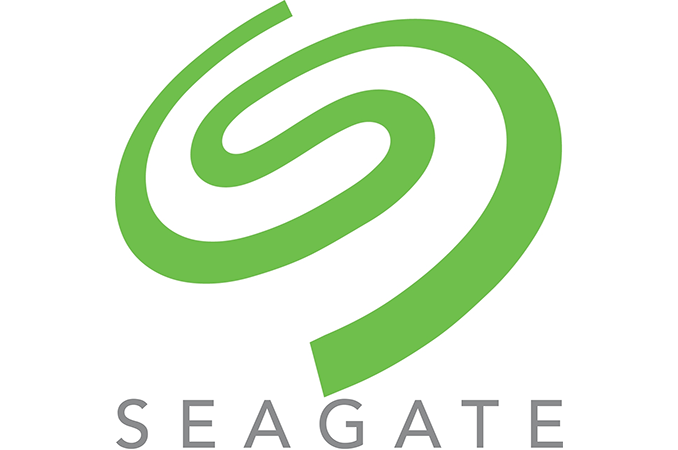The Evolution of HDDs in the Near Future: Speaking with Seagate CTO, Mark Re
by Anton Shilov on July 6, 2016 2:00 PM ESTConclusion
While the evolution of consumer HDDs in the recent years was not fast, things are about to change. Use of SMR will help to increase capacities of hard drives in the coming quarters and then TDMR will help to drive capacities again in the coming years. One thing that should be clear at this point is that the evolution of HDDs in the future will be slightly different from their development in the past. The reason for that is segmentation of the HDD market and the need for optimized configurations based on the application. Makers of hard drives tend to tailor their models for particular applications and one size does not fit all even in a segment of the market.
For example, archive, nearline, NAS, DAS and secondary HDDs for desktop PCs benefit from high capacities. However, performance barely matters for archive or DAS hard drives, whereas nearline and NAS have to be offer both storage space and relatively high performance. As a result, some HDDs just offer vast capacities and performance with the help of PMR, helium and 7200 rpm motors, whereas other rely on SMR and come with a lower spindle speed.
Things will not get any less complicated in the coming years because the technology to build HDDs that satisfy demands of end-users and cost reasonable amounts of money is not easy. As a result, some technologies, or a combination of technologies, will not be used to build all types of HDDs. Some things will remain mostly in the data center for Seagate (such as helium), other will be strictly aimed at the consumer (hybrid drives).
Moreover, Seagate and its rivals understand that HDDs cannot compete against SSDs when it comes to performance, especially random read/write performance. Therefore, while hard drives will get faster in the coming years, do not expect manufacturers to make performance their primary concern. At least, not when it comes to competition against SSDs. Density and power are primary concerns with a base level of performance.
Seagate's roadmap includes SMR, TDMR, HAMR as well as multiple other technologies. The company has been developing a set of technologies that should enable capacity, performance, reliability, and endurance of future HDDs featuring the aforementioned recording methods. What the company cannot be sure about is exact demand from various market segments, for example, demand for data center HDDs does not seem to be growing rapidly, but yet this is a segment that Seagate pins a lot of hopes on. Client storage is changing in general and while it is possible to predict what future client HDDs should offer, demand for client hard drives are still up for debate.
The situation with some of the upcoming technologies is pretty clear and exact products will be developed based on market performance, keeping in mind financial viability. Recently Seagate announced plans to adjust its manufacturing capacities in a bid to maintain financial stability, which will inevitably have an impact on its future products.
We would like to thank Mark Re for his time in discussing Seagate's future.
Sources and Recommended Reading:
Seagate: Hard Disk Drives Set to Stay Relevant for 20 Years
Hard Disk Drives with HAMR Technology Set to Arrive in 2018
Market Views: HDD Shipments Down 20% in Q1 2016, Hit Multi-Year Low











91 Comments
View All Comments
abrowne1993 - Wednesday, July 6, 2016 - link
Is that all for one second of CGI in the new Transformers movie?Michael Bay - Thursday, July 7, 2016 - link
And some porn.Holliday75 - Friday, July 8, 2016 - link
Is Megan Fox back? She could probably use the cash.JlHADJOE - Monday, July 11, 2016 - link
8 Terra bits? So 1TB =)wumpus - Thursday, July 7, 2016 - link
@JoeyJoJo123>It's ogre. HDDs are dead. SSDs won.
>Just give up.
Know how I know your data isn't backed up? There are two types of people. Those who have lost all their data, and those who are going to (possibly again).
Sure, you might not know how Amazon is storing your data, but I'll bet that it just isn't backed up.
Hard drives just moved up the data hierarchy. They are now stuck between tape (near the cost/TB without the huge entry costs) and SSD. They are also still ideal for NAS, especially consumer grade to fairly decent grade. Don't forget all the random access advantages HDDs have over tape.
I also expect to watch the whole HDD/SSD dance play over again with SDD/3dxpoint. Although the more interesting story will be if 3dxpoint will be able to replace main/virtual memory, leaving multi-GB DRAM "caches" between the CPU and "main memory".
Perhaps Mr. Ogre needs to consult with the tri-lambs. I'm sure they could find some uses for HDDs.
Nagorak - Monday, July 11, 2016 - link
I'm having difficulty understanding your comment but if you're implying that data stored on AWS isn't backed up then I find that almost inconceivable.hectorsm - Thursday, July 7, 2016 - link
You're delusional. Today ~99% of PC shipments still have HDDs.romrunning - Wednesday, July 6, 2016 - link
SMR was never a technology that ever interested me. I don't want more storage with measurably worse performance than existing ones. Seagate should have invested more into SSD tech than in SMR for HDDs.JoeyJoJo123 - Wednesday, July 6, 2016 - link
You can do both. SMR for the platters with additional flash cache for frequently accessed data. Unfortunately HDDs are a one trick pony now, and they need to push in the one area they're better than SSDs in (relative amount of storage per $ spent).extide - Thursday, July 7, 2016 - link
Yeah I always thought the combo of a SMR drive + some NAND cache was like super obvious, and I am wondering why we haven't seen more drives like that.